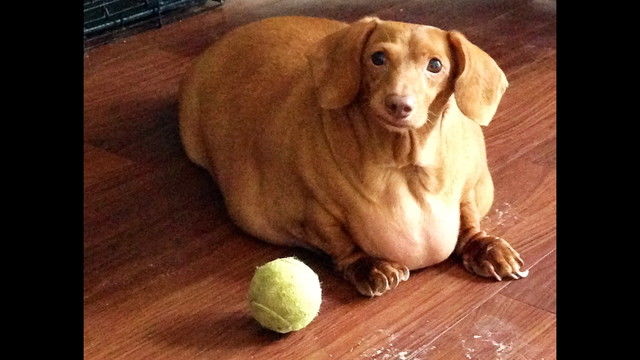Canine Obesity
Owning a dog is a big responsibility, especially when they are looking at you with their adorable puppy eyes wanting some more snacks. Unfortunately if you are unable to resist those big eyes you will slowly kill your dog with kindness. Obesity in dogs is a major health concern all over the world with over 40% of dogs estimated to be overweight. It is essential to help your dog maintain a healthy weight to help them live a happy, healthy and long life. A healthy weight varies on the breed, age and neutering status.
Ideal weight ranges are dependent on the breed of each dog, which life stage they are in (puppy or senior) and their neutering status. There are some dog breeds that are more susceptible to becoming overweight including Labrador, Retriever, Bassett Hound, Cavalier King Charles Spaniel, Cocker Spaniel, and Beagle. It is important to talk to your vet about your dog’s ideal weight range to help keep them happy and healthy throughout their life.
When your dog is gaining weight normally from an excess amount of calories being consumed and lack of exercise they can be at a higher risk to many health problems as well as obesity. Obese dogs are higher at risk for Diabetes, Arthritis, liver disease, heart problems, hyperthyroidism, hyperadrenocorticism, osteoarthritis, Urinary troubles, Cardiovascular and respiratory diseases and skin conditions, all attributing to a decreased quality of life. Your Veterinarian may perform a physical examination or complete blood or urine tests to further diagnose any concerns you may have about your dog.
There are many tell-tale signs that you can keep an eye out for at home to identify whether your dog is currently obese or becoming obese. These include: keeping an eye on the size of their collar (whether it is getting too tight or not), are unable to feel their rib’s, they no longer have a distinguishable waist and has a broad flat back, they may also show signs of slow movement or difficulty walking and getting up and down, shortness of breath and sleeping more than usual.
If your dog is obese or becoming obese they will need to begin a healthy weight loss program, an Ideal weight loss program will involve no more than 2% body weight lost per week achieved by diet modification and increased exercise. The diet should be adjusted over the course of a week to avoid stomach upset and according to your dogs breed and life stage. There are many different weight loss and weight management foods that are available to suit each individual dog. It is also needed to reduce the amount of treats that your dogs is getting. Treats should not represent more than 10% of your dog’s total diet. If this is not an option for you, try giving healthy treats. There are many weight loss treats available or you can try healthy at home options like apple slices, steamed carrot or broccoli.
Exercise should also be increased to help your dog loose that extra weight. Exercise helps the pet to maintain lean muscle mass, increases caloric burning and promotes routine to long-term weight management. Exercise should be increased gradually to avoid any possible injuries or sicknesses. You are able to increase exercise by providing more toys that encourage your dog to run around and play on its own. Encourage your pet to go for a short walk around the yard before having its breakfast/dinner, going for short walks and increasing distance and speed gradually.
If you are struggling to maintain your dog’s ideal weight or are unsure of their ideal weight make an appointment with your vet to develop a customized weight loss/maintenance plan for your to dog to ensure they live their best life.
